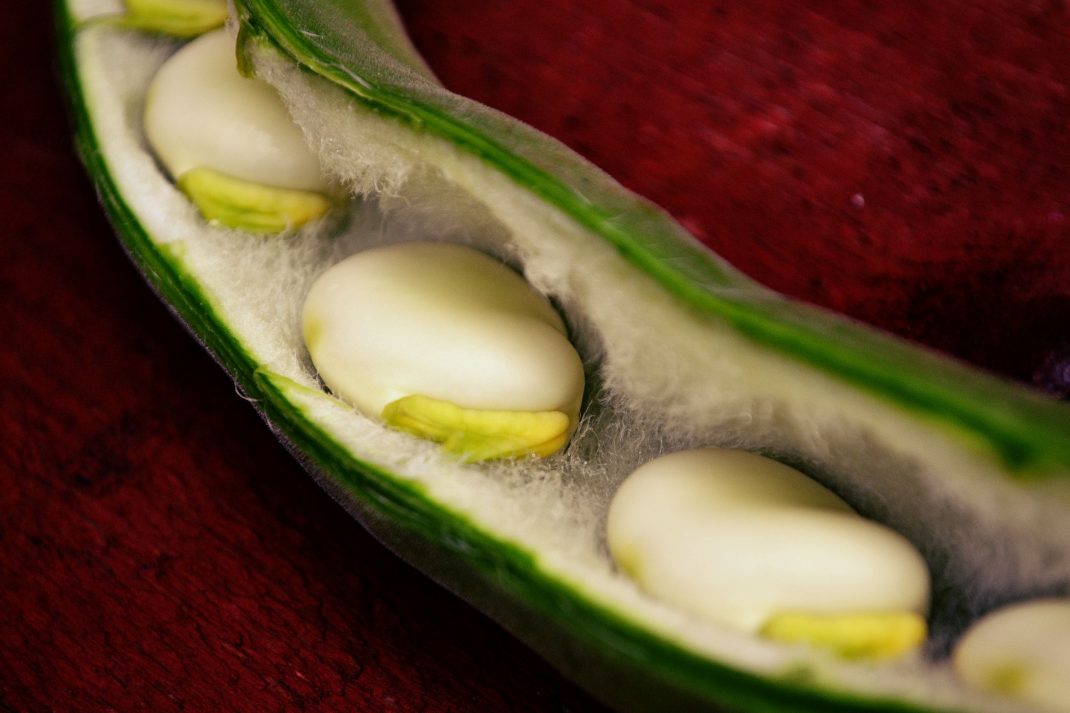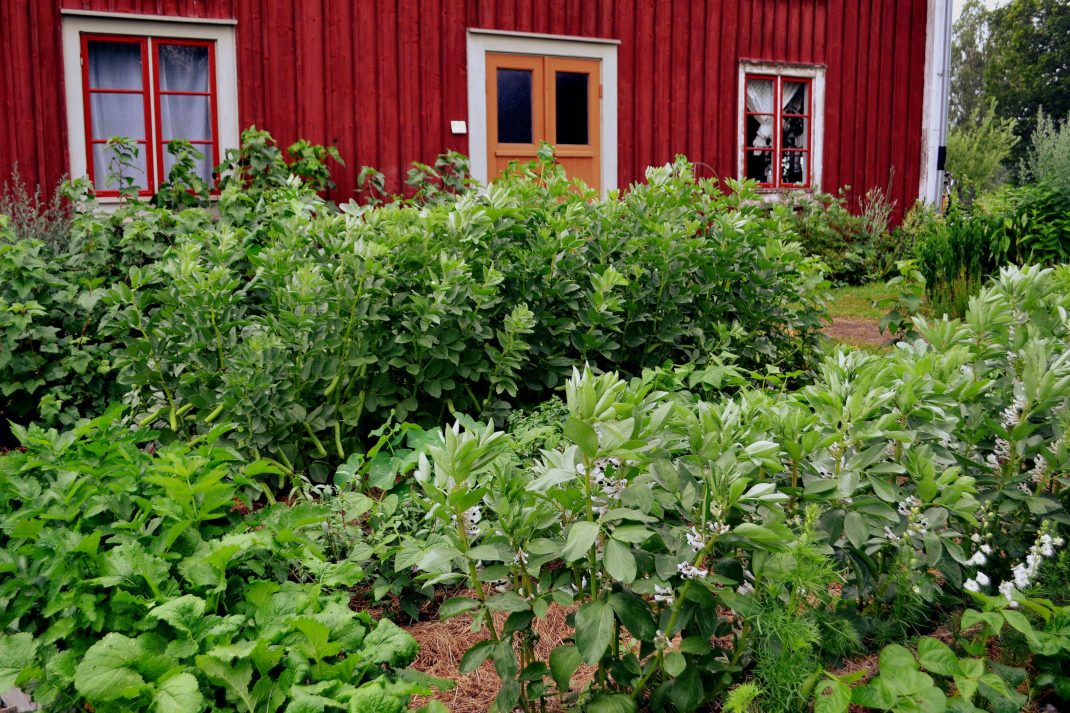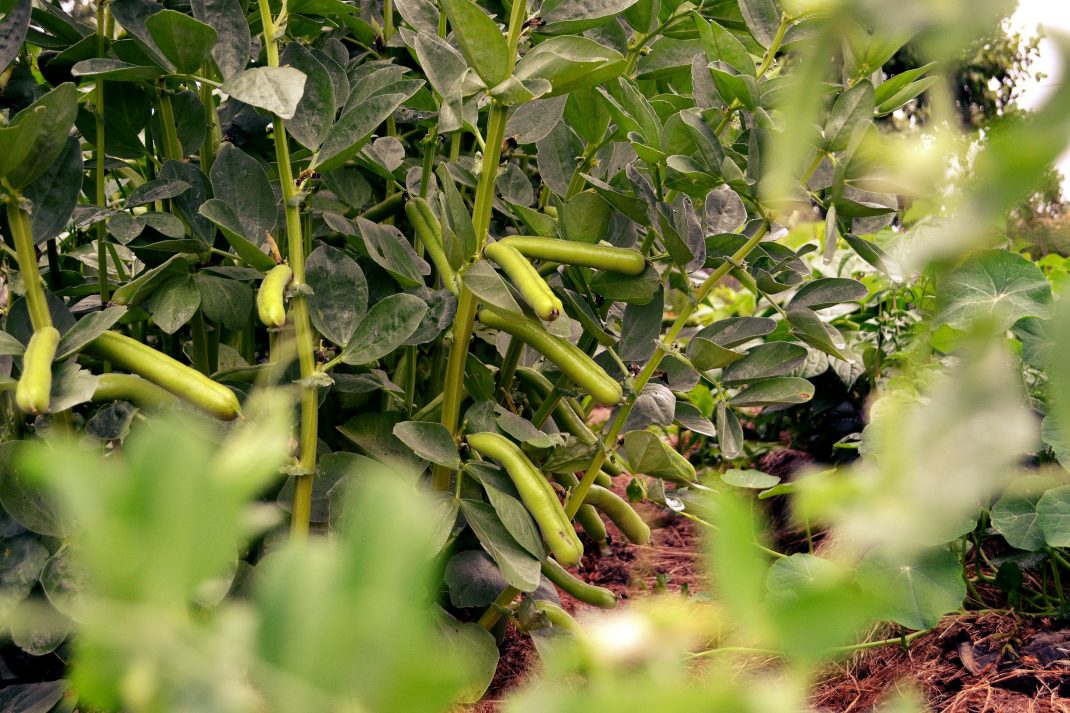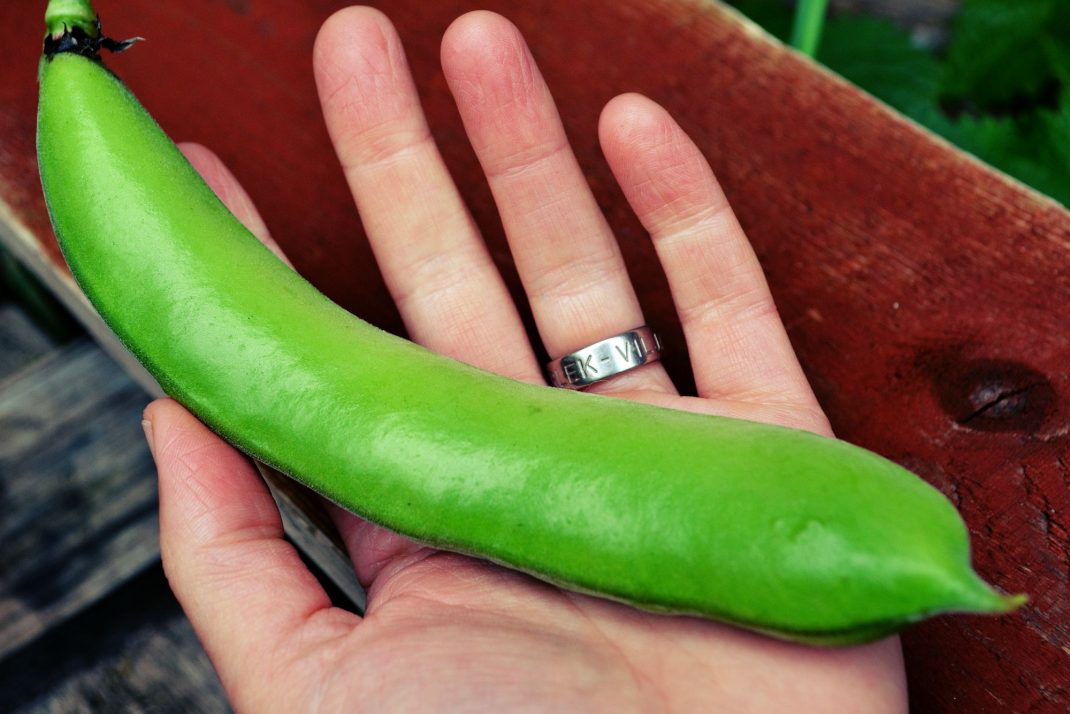Harvesting fava beans
My beautiful fava beans are some of the best smelling plants in the kitchen garden. And the flowers have just started to produce large, fresh pods filled with delicious different-colored beans.

In my opinion, fava beans are like little artworks, just take a look at this genius packaging of the beans!
I sometimes have had open days where anyone who’s interested can come and see my garden. Afterward, I always hear people talking about wanting to grow fava beans too. It’s very inspiring! One of the most important things you need to know is of course when it’s time to harvest your beans.

Several rows of fava beans in different sizes are growing in my legume department here in the kitchen garden.
I have three double rows of fava beans in my kitchen garden right now. All in different stages of development. The row I planted in April is starting to produce pods that I can start picking off very soon. But most of them still need some time to grow.
You can, of course, decide to harvest them whenever you want. I like getting as much food as possible for my hungry family, so I usually wait until the beans have grown quite large. I’ve tried harvesting them when they’re still small and serve them pan-fried. Unfortunately, it just didn’t taste very good.
Well-filled pods
It’s easy to assume that the beans are ready when the pod has grown quite large. But I always touch the pods to make sure. Even though the pod looks to be the “right” size, it’s sometimes a bit spongy to the touch. This means that I need to wait a bit longer. The beans inside the pods have usually grown to full size a few weeks later. The pods are actually “insulated” and there’s often a lot of air inside the pod before the bean inside is large enough and ready. That’s why it’s easy to get fooled and start the harvest a bit too soon.
But there are other ways to tell when the time is right. One telltale sign is that the pod starts to change its appearance. The pods start off looking non-reflective and velvet-like. Later, they look shiny with little brown spots. If the pods start feeling “fuller” and look like this, then you know it’s time.
Guide: Planting and growing beans

The beans in the bottom are ready first. I harvest the ones in the top a few weeks later.

I can feel the beans clearly in this lovely green pod.
Fava bean plants can grow quite tall. But not mine. I always cut the top off my plants. I often find that the plants don’t really bloom in the top. So it keeps growing but no beans are produced up there. So instead of letting the bean plants spend lots of energy and resources growing taller, I cut the plant just above the last cluster of beans on the stalk. I also think that the beans ripen quicker this way. This of course also means that I don’t have to give the plants any extra support. They can handle themselves and won’t bow down to rain or heavy winds when they’re a bit shorter.
You could try producing a second harvest from your plants if you don’t need the space in your garden. The plant must be cut down to about 10 centimeters (4 inches) and after that, you just provide fertilizer, like for example horse manure or old grass clippings. New stalks will grow after a while and produce a new batch of beans. This harvest will be smaller than the first one and for me, it’s perhaps not the best way to use the space in my garden bed. I would rather cut the plants down completely and then put other vegetables between the old bean plants.

Otto loves picking the beans from their pods. He likes everything about them: their taste, the way they look and feel.
Fava beans are both delicious and nutritious. We like eating them boiled with a butter sauce but we also like making falafel from fresh or dried beans, or we simply just fry them in a pan and eat them with something else. We DON’T remove the outer skin before we eat them. It’s really no problem eating the skin, it’s just something you have to get used to. For me, it’s too much work to remove the skin from every single fava bean.
I put all the excess beans in the freezer after parboiling them for a minute or two. Then it’s time to put them on baking paper on a tray and freeze them. Good luck!
/Sara Bäckmo



Leave a Reply
You must be logged in to post a comment.